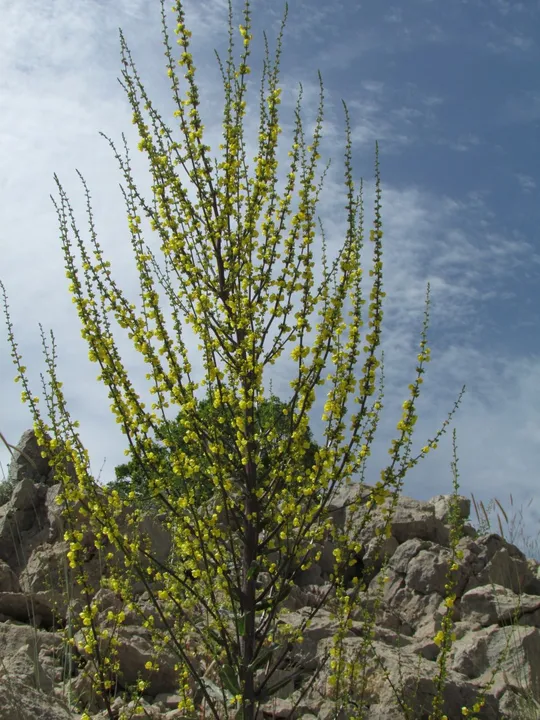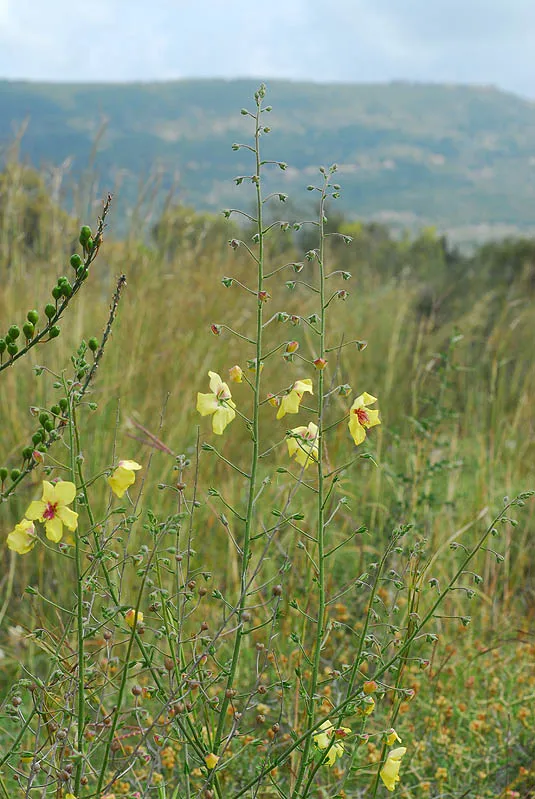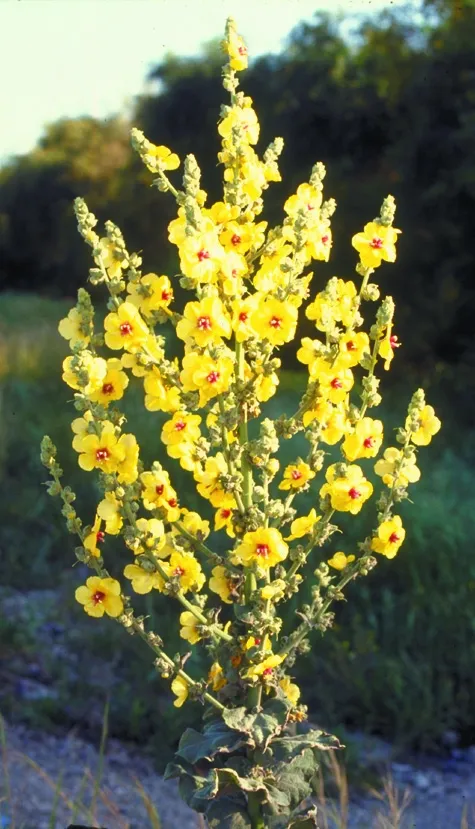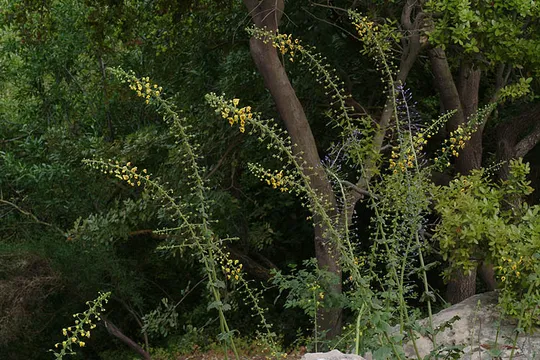Caesarea Mullein, Banias Mullein
Verbascum caesareum
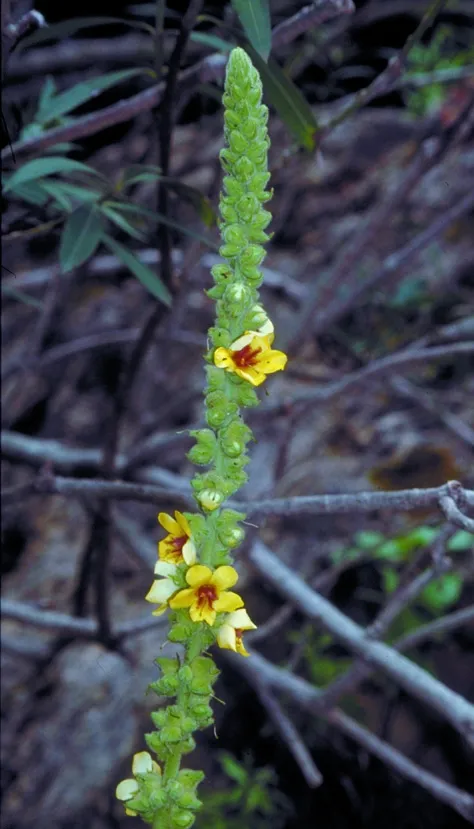
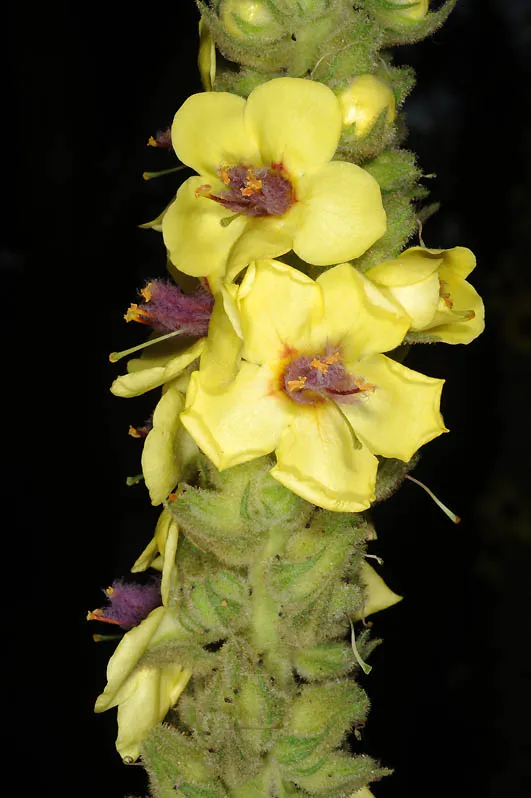
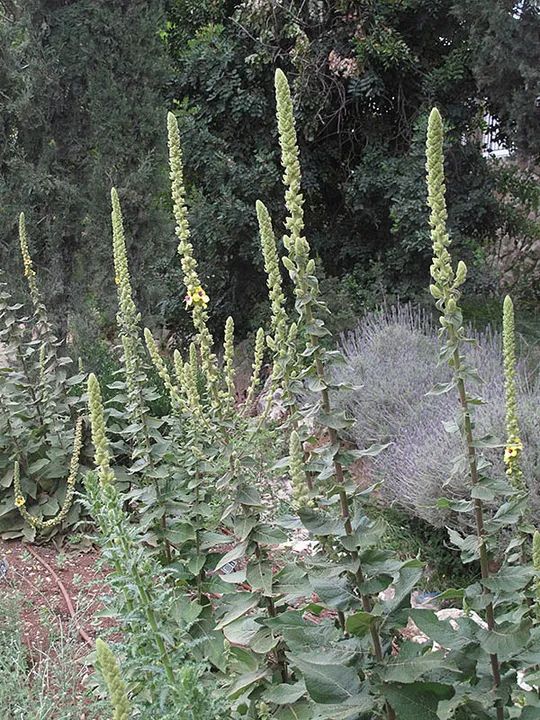
Verbascum caesaereum is one of the rare plants of Israel: it grows only the Upper Galilee in two sections of the Kziv and Betset streams: in 1990-91, three sites were found in the Betset Stream and four sites in the Kziv Stream between Keren Bartut and Mount Ziv. A total of 250 plants were counted in all the populations. Near the Montfort dozens of plants appeared after woodland deforestation (Talia Oron, 2004). On the Hermon the species is rare, growing only in the lower Mediterranean forest zone: in Wadi Si'on, Nahal Zvadim, Nebi Hazuri-Wadi Govta, Wadi Ar'ar (a single specimen at an altitude of 1,300 m) and in the woodland between En Qiniye to Sa'ar Stream.
Along channels of rocky seasonal streams with large boulders, flowing in the steep mountainous landscape. Also on the edges of woodland on steep shaded slopes on rock edges and at the foot of cliffs.
For the genus – see Verbascum berytheum.
V. caesaereum was first found around Banias at the foot of Mount Hermon by Boissier the nineteenth century. He named the species according to the ancient name of Banias “Caesarea Philippi”. The Hebrew name was changed recently to "Botzin Caesarion" the name of Banias in Hebrew sources from the Mishnaic period.
V. caesaereum differs from most species in Israel in the shape of its dense flower spike, on a straight unbranched stalk. It is similar to V.galilaeum, which also has a densely flowered spike. V. caesaereum differs from V. galilaeum in the narrow calyx teeth that are split almost to their base, unlike the ovoid calyx teeth whose lower third is fused in V.galilaeum; in its smaller corolla diameter 25-40 mm, compared to a corolla diameter of 40-55 mm in V. galilaeum. V. galilaeum also differs in its habitat –moist depressions and water bodies.
• All the Verbascum caesaereum sites are located within nature reserves.
• The sites are far from inhabited areas, but most are at the edge of trails.
• The V. caesaereum populations are small, and grouped in small stands on small areas. Populations commonly number 10-60 (3).
• The four sites where the species grows are concentrated in only two sections: the Kziv Stream and the Betset Stream. The distance between the two sections is only 3 km.
The populations of Verbascum caesaereum in the Kziv Stream should be monitored. The effect of hikers and visitors should be studied, and if the result is negative, a visitor management program that will prevent harm to the two populations should be implemented.
Eastern Mediterranean. Verbascum caesaereum is common in the Levant; from the Amanos Mountains in Turkey (these mountains actually belong geographically to Syria), through the western slopes of Lebanon, west of Mount Hermon and the Upper Galilee. It has not been found yet in Syria.
Verbascum caesareum is a large rosette perennial plant that is very rare in the country: it grows only in the Upper Galilee, and only four sites are known, located in two adjacent geographic sections. The small number of sites and the limited number of plants constitute a major threat to its continued existence in Israel. Its locations are not vulnerable, but are close to trails. V. caesaereum is a sub-endemic species, which also grows in Lebanon and on one mountain in Turkey, about which we have no conservation status information. V. caesaereum is a globally peripheral northern species, which makes the preservation of the Galilee sites particularly important.
Current Occupancy Map
| 1000 squre meter pixel | 5000 squre meter pixel | 10000 squre meter pixel | |
|---|---|---|---|
| number of observations | 0 | 0 | 0 |
| in total pixels | 0 | 0 | 0 |
| Family | Scrophulariaceae |
| Classification | On the extremely rare species list |
| Ecosystem | Mediterranean |
| Chorotype | Eastern Mediterranean |
| Conservation Site | Kziv Stream, Wadi Sarakh |
| Rarity |
1
2
6
|
|---|---|
| Vulnerability |
0
0
4
|
| Attractiveness |
0
0
4
|
| Endemism |
0
1
4
|
| Red number |
1
2.1
10
|
| Peripherality | N |
| IUCN category | DD EW EX LC CR EN VU NT |
| Threat Definition according to the red book | Least concern |
 Based on:
Based on:
